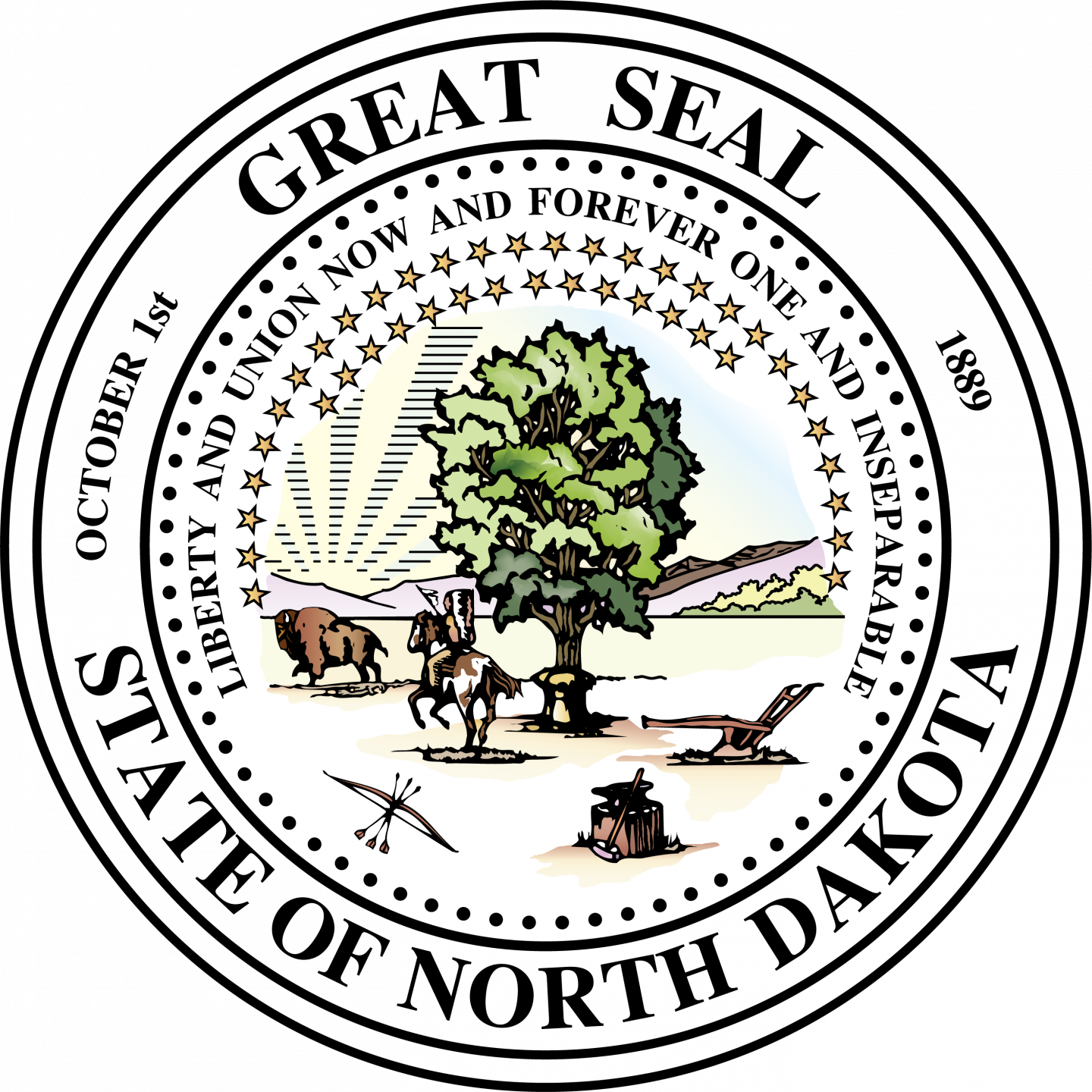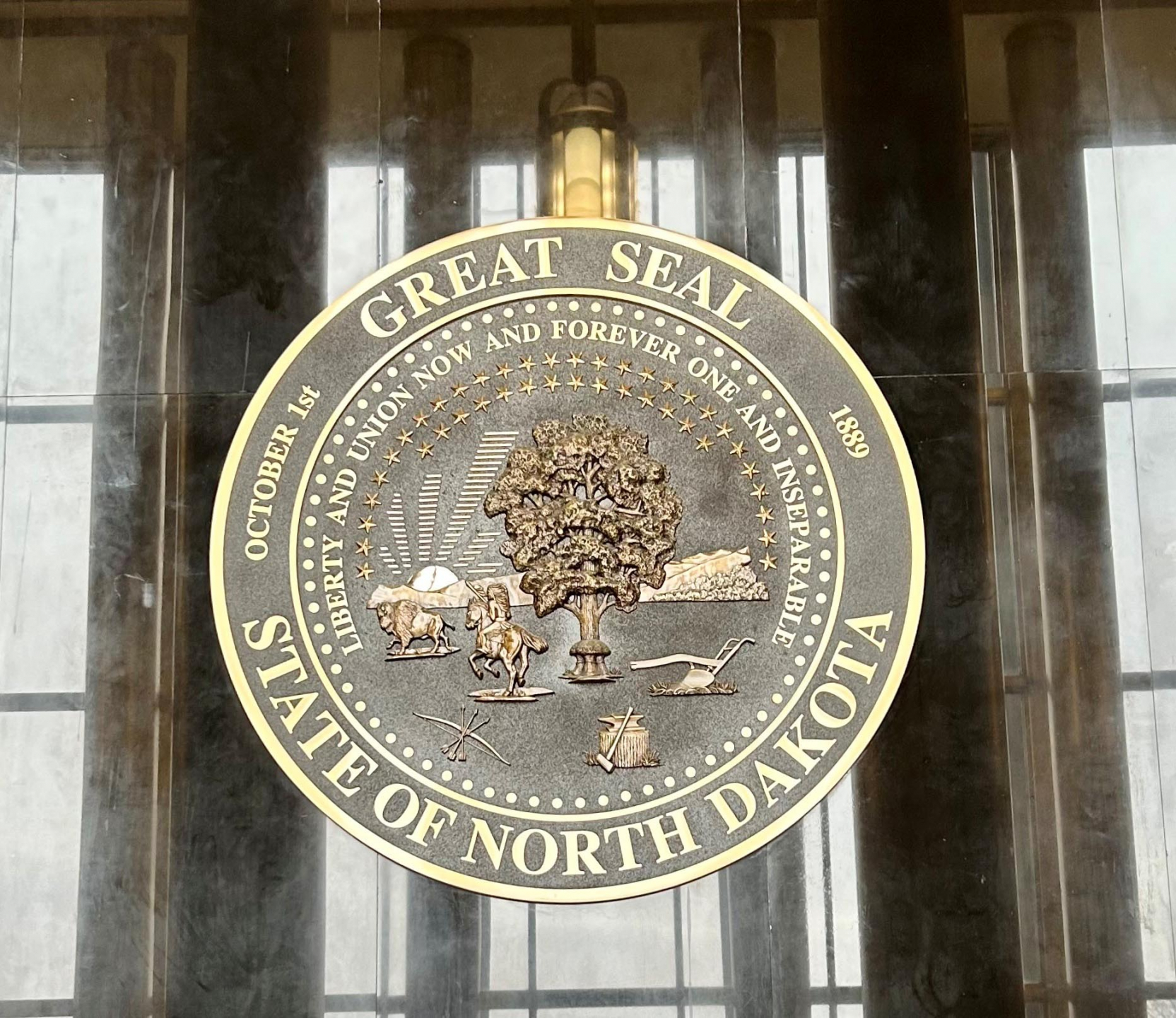
The Office of the Secretary of State has been charged with custody of the Great Seal since North Dakota’s statehood was recognized.
The North Dakota Great Seal is protected by state law (NDCC § 54-02-01 of the North Dakota Century Code). It cannot be reproduced or modified in any manner for use in any commercial applications.
Requests for permission to use the Great Seal of North Dakota are at the discretion of the North Dakota Secretary of State. To request a potential use, contact us.
Description of the Great Seal
Section two of Article XI of the North Dakota Constitution includes a description of the Great Seal of North Dakota. Some of the words contained in the current description are the same words that were used for the territorial seal approved on January 2, 1863, by the Legislative Assembly of the Territory of Dakota.
The description includes:

- A tree in the open field
- Perhaps an American Elm, the state's official tree today
- Three bundles of wheat
- Representing three branches of government - executive, legislative and judicial
- A plow, anvil and sledge
- A nod to agriculture and the state's strong work ethic
- A bow crossed with three arrows, and an Indian on horseback pursuing a buffalo toward the setting sun
- Reminders of the state's rich Native American culture and history of the Northern Plains
- A half circle of forty-two stars
- North Dakota is the 39th state, however the stars represent the number of states expected to be in the Union by 1889 since it was unknown what number North Dakota would be.
- The motto "Liberty and Union Now and Forever, One and Inseparable"
- A quote by Daniel Webster
- The words "Great Seal," "State of North Dakota," "October 1st," and "1889"
- October 1 was the date voters approved the state's constitution by a vote of 27,441 to 8,017; 1889 was the year North Dakota was recognized as the 39th state
While the Great Seal's appearance has generally been true to the description, the design has varied through the years. The first known design is found in the 1887 Blue Book. There were designs with slight variations following. In the spring of 1987, Secretary of State Ben Meier commissioned Dickinson artist Lili Stewart-Wheeler to create a new design. That design was approved on September 17, 1987, and is the same one used today.
Bronze Likeness of Great Seal in the State Capitol
A bronze likeness of the Great Seal was placed in the State Capitol Memorial Hall during a ceremony on February 22, 2006. Its commission was undertaken to coincide with the 117th anniversary of the Enabling Act, which allowed North Dakota, South Dakota, Montana, and Washington to join the Union as individual states.
The bronze Great Seal is six feet across and weighs 440 pounds. The commemorative plaque that hangs underneath it weighs 570 pounds. The seal and plaque were made by Metal Arts Company in Mandan, ND; with installation, the cost was approximately $48,000.
State Symbols & Capitol
- For information on North Dakota's many state symbols visit ND Tourism - State Symbols.
- Explore the history and buildings of the North Dakota State Capitol Grounds.
